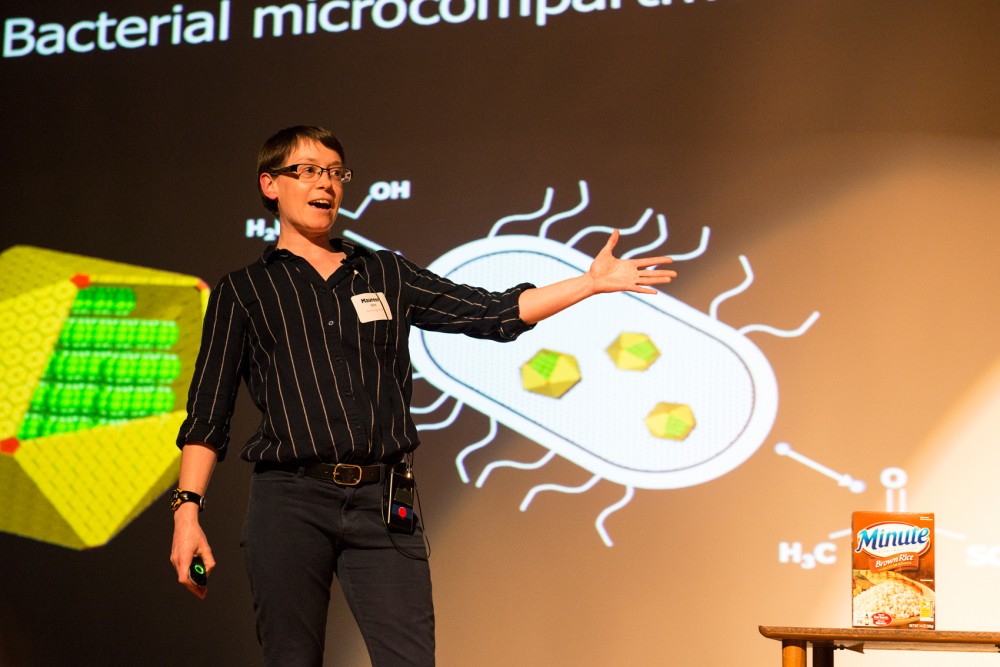Researchers boosted the visibility of women in science, technology, engineering and mathematics fields Monday night — at breakneck speed.
Families, students and faculty members packed the St. Paul Student Center Theater to watch 12 women scientists present high-speed lectures on things like medicine grown from fungus, organic agriculture, aquatic ecology, aerial engineering and climate change at the University of Minnesota-hosted speedy lecture series.
While women make up nearly half of the work force, disparities remain between men and women in STEM degrees and jobs.
According to a study by the U.S. Department of Commerce, women fill just 24 percent of all STEM jobs, and while proportionally more women than men go into physical and life sciences, the total number of men in that area still far exceeds that of women.
Diane Anderson, a professor at St. Catherine University, attended the event with her 7-year-old granddaughter, Alexis.
“She has a smart brain, and I want her to grow up using it and not just focus on being pretty,” Anderson said.
Alexis said her favorite presentations were those on plants and birds, but she also liked the funny pictures of animals when Annika Moe presented her work surveying hundreds of photos of animals in Africa’s Serengeti.
Julia Ponder, assistant professor and executive director of the University’s Raptor Center, presented her research on how humans affect hawks in the Galapagos Islands.
Ponder said she’s had a passion for animals since she was 8, but she said there were moments during her time when being a woman in veterinary school made her experience different.
“I was one of the lucky ones,” Ponder said. “There were things that we put up with and had to live with that were less than ideal,” she said, adding the majority of colleagues, classmates and faculty were “fabulous.”
Monday’s event also served as an opportunity to show what the future can hold for young students, Ponder said.
“We can show them that women can be successful in science and that following their passion matters,” she said.
The College of Biological Sciences expanded the event — called SciSpark: Women in Science — this year to include researchers from more colleges within the University.
“There is a real desire to boost collaboration, and that’s something that the University as a whole is trying to do across disciplines and across colleges,” said Stephanie Xenos, director of communications and marketing for CBS, adding the event lets presenters connect and see each other’s work.
Valery Forbes, dean of the CBS, presented her work on ways to improve how people assess risks when they throw out chemicals, from agricultural runoff to personal care products.
“Biology is expected to deliver results to all these problems, so by working together, I think we can do more,” Forbes said.
Even with efforts like SciSpark, fewer women than men enter higher levels of science and win awards, said Marlene Zuk, professor and associate dean for faculty at CBS.
Zuk said women have trouble finding jobs and drop out at different stages in their careers, adding it’s a complex problem with multiple causes.
“We recognize that even though a lot has changed in the last decade or two or even three, there is still biases and barriers that have to do with women succeeding in science,” Zuk said.











